|
|
The Taff Vale Railway by D.S.M.Barrie
|
Foreward |
The story of the Taff Vale Railway is not unlike that of industrial South Wales itself-that restless, quick changing background against which this railway and others grew up, prospered, and finally lost their separate identities by amalgamation. It is a story of pioneer enterprise in a land awakening to vast changes and sweeping progress; a story of vigorous expansion, a story of hard times, of fierce and almost uncontrolled competition, of prosperity well-nigh fantastic by British railway standards; ultimately of the submergence of local autonomy in a vast national industry. For all that, a fascinating story-one of the most fascinating and in some respects one of the most remarkable, in the history of our railways.
The River Taff, that gives its name to the subject of this history, has its source in the Brecknock Hills above Merthyr Tydfil. It flows down its own valley until at Pontypridd it is joined by the Rhondda River. From Pontypridd the now much broader Taff swings down through the narrow cleft of Taff’s Well to reach the broad meadows around Llandaff, and finally to spill into the Bristol Channel at Tidal Basin, immediately west of Cardiff.
A
lovely country, this, two centuries ago, with its mountains still unscarred by
shafts and pit-waste, the lower slopes laid out to farm, the green woods yet
uncut for pitwood; nor had pollution thus early blackened the rivers to drive
the salmon from Rhondda and Taff. Nevertheless, before the dawn of the
nineteenth century, the toxin of the New Age had sounded; they were working the
ore at Dowlais and the coal at Dinas in the Rhondda, and over flimsy tram-plates
the first horse-drawn wagons trundled. Soon the slopes of nearly every mountain
echoed to the ring of axes and the dull thud of spades, whilst from the hollows
furnace-smoke rose with ever-thickening density to the sky.
How
swiftly industry laid its grimy hands upon Glamorgan may be judged from the leap
in population, from 70,000 to 860,000 (for the county as a whole) during the
nineteenth century, and from a few hundreds to over 100,000 in the Rhondda
Valley alone during the same period. Coal output from South Wales and
Monmouthshire (of which the Rhondda became the most important individual
producing unit) grew from 8,000,000 tons or so at the half-century to 15,000,000
tons in 1870 and to no less than 57,000,000 tons in 1913. Even in 1835, before
railway communication with the seaboard was available, Dinas pits alone were
sending over 50,000 tons by canal to Cardiff.
While
it was upon the steam coal trade that the greatest prosperity of the area in
later years mainly depended, it was, however, with the iron industry that such
prosperity began; the land-sale and export coal trade (37,000,000 tons of
exports from South Wales ports in 1913!) developed initially from the production
of coal surplus to local ironfounding requirements. With the Industrial
Revolution the South Wales iron trade grew rapidly from the middle of the
eighteenth century onwards, a focal point of production being in the Dowlais-Merthyr
area, where the many famous ironworks to be set up included Dowlais (1759),
Cyfarthfa (1765), Hill’s Plymouth Iron Works (1777), and Pen-y-darran (1784).
Turnpike and Canal
From
the earliest days of these great enterprises, transport was revealed and
appreciated as a bottleneck in further development, and the local ironmasters
were active in seeking for their products a means of transport more efficient
than the trains of pack-mules wending their precarious way down to Cardiff over
perilous mountain paths and marshy bridle-paths. Funds for the Merthyr-Cardiff
turnpike road were raised in 1767, while after some preliminary failures the
Glamorgan Canal Navigation Act obtained the Royal Assent on 9 June 1790. As with
other measures sanctioning canals in South Wales and Monmouthshire, this Act
provided (Clause 57) for the construction of Pen-y-darran Tramroad connecting
tramroads from collieries and ironworks situate not more than 4miles from the
canal.
The
Glamorganshire Canal itself was a not inconsiderable engineering work, having a
total rise of 568 ft. in the 25¼miles between the Cardiff Sea Lock and the head
of the canal at Merthyr. It was completed, at a cost of over £100,000, in 1798,
and in the following year a Bill was promoted in Parliament for a Cardiff &
Merthyr Railway. This was described as a ‘dram’ (tram) road and was intended
to run from the Cardiff Sea Lock up the valley of the Taff to Navigation House
(Abercynon), whence one arm was to have turned westward towards Aberdare, the
main line continuing for 9miles along the cast bank of the Taff and then bearing
further east to a terminus at Carno Mill, near Rhymney. A branch was to have
served the limestone quarries north of Merthyr, which figure as the objective of
many later railway schemes.
Powerful
opposition to this early scheme for rail communication was forthcoming from the
Glamorgan Canal Company, and after the Bill had been read a second time it was
withdrawn; Chappell* suggests that it was as part of the compromise settlement
that the historic Pen-y-darran Tramroad was built. This tramroad was some 9miles
in length and connected the Dowlais, Pen-y-darran, and Hill’s Plymouth Iron
Works with the Glamorganshire Canal basin at Abercynon; its course along the
cast bank of the Taff was generally similar to that of the intended dramroad
of 1799, and one of the objects of its construction was to by-pass the congested
part of the canal between Quakers’ Yard and Abercynon, on which section 16 of
the canal’s 50 locks were concentrated in a single mile of waterway. Although
it was used by various other industrialists, the Pen-y-darran Tramroad was built
and owned by a partnership of the three ironmasters primarily interested, the
original partnership deed being dated 18 January 1799. It was by one of this
trio, Samuel Homfray of Pen-y-darran, that Richard Trevithick was engaged in
1803, three years after the opening of the tramroad, installing steam stationary
engines; Homfray accorded Trevithick facilities for building his experimental
steam locomotive and had sufficient confidence in him to lay a bet of 500
guineas with Anthony Hill, the proprietor of the Plymouth Iron Works, that the
locomotive would haul 10 tons of iron from Pen-y-Darran to Abercynon. A
successful trial trip was run on 21 February 1804, thus securing for South Wales
the distinction of staging the first occasion on which a steam locomotive hauled
a load (10 tons of iron and 70 men, all in or on 5 wagons) on rails.
By
the beginning of the nineteenth century a number of other local tramroads, all
horse-worked, were in operation in the area. The rapid growth of industry and of
the seaborne trade of Cardiff, however, soon imposed an intolerable burden upon
the turnpike road and canal, and the ironmasters revived their interest in a
railway down the Vale of Taff. By 1835 the canal was carrying some 100,000 tons
of coal annually down to Cardiff, about one-third of this quantity going on by
sea to London; it was in the early part of this year that Anthony Hill asked
Isambard Kingdom Brunel, who was a personal friend of Hill’s, to estimate the
cost of a railway from Merthyr down to Cardiff. Following Brunel’s report,
which put the cost at £190,649, a meeting of industrialists was held at the
Castle Inn, Merthyr, and the decision was taken to promote a company for the
purpose. In the chair at this meeting was Mr. (later Sir) Josiah John Guest, M.P.
for Merthyr, who was to become the first chairman of the Taff Vale Railway.
|
|
The Act of Incorporation
Despite
the opposition of the Canal Company, the Taff Vale Railway Company’s Act (6
Wm. IV, cap. lxxxii) received the Royal Assent on 21 June 1836, so incorporating
the first public railway of any commercial importance in the Principality. The
preamble to the Act stated:
... The making of a Railway from Merthyr Tydfil to Cardiff, with a Branch therefrom, to communicate with the Tramroad leading to the several Iron Works of Pen-y-darran, Dowlais, and Plymouth, and another branch to the Collieries called Lancaiach (sic), and also The First Directorate a Branch to communicate with the Tramroad leading to the Collieries called Dinas, and another Branch leading to or near Cogan Pill on the West Bank of the River Ely, all in the County of Glamorgan, would be of great public convenience by opening an additional, certain and expeditious Means of Conveyance to the Sea for the extensive Mineral and other Produce of the Places and Works above mentioned, also for the Carriage to the said Works from the Port of Cardiff of Iron Ore and other Mineral Produce used in the Fabrication of Iron, and for the Conveyance of Passengers and Goods to and from the said Towns of Merthyr Tydfil and Cardiff, and the several intermediate and adjacent Towns and Districts...
The
Merthyr terminus was fixed as being at or near an open space of ground on the
south side of the town, between the River Taff and the Cardiff Road; the Cardiff
Terminus was to be at or near the Ship Canal which the Marquis of Bute proposed
to construct in the parish of St. Mary, Cardiff. The ‘Branch to communicate
with the tramroad to the Collieries called Dinas’ was the genesis of the
afterwards famous Rhondda Branch of the Taff Vale. The owners of the Dinas
Colliery Tramroad were named in the Act as the Rev. George Thomas (of Llandaff
Court) and Thomas Thomas.
By
this Act the original capital was fixed at £300,000 in £100 shares; the first
directors of the Company were Josiah John Guest, M.P., Walter Coffin, Edward
Herbert Lee, Thomas Revell Guest, Thomas Richard Guppy, Thomas Powell,
Christopher James, Thomas Carlisle, Henry Rudhall, William Killigrew Wait,
William Jonas Watson, and Peter Maze. (Messrs. Guppy and Maze were members of
the original Great Western directorate.)
The
Act protected the Glamorganshire Canal from being interfered with by
construction of the railway, whilst it was stipulated that the branch to Cogan
Pill was not to be constructed until the main line was completed and ‘opened
for the Passage of Carriages.’ Another clause of great interest, having regard
to subsequent difficulties on various railways with mine-workings under the
right of way, was that requiring the owner of any minerals lying under the Taff
Vale Railway, or within 20 yards of it, to give the company 30 days’ notice of
intention to work, the company also having the right of compulsory purchase.
This railway, like many early pioneer systems, was legally open to anybody to use ‘with Carriages and Engines properly constructed,’ subject to the company’s tolls and regulations. The company itself was empowered to carry passengers and goods in trains hauled ‘if they shall think proper’ by ‘locomotive and stationary engines or other moving Power.’ The passenger fares by the company’s own trains were not to exceed 1½d. per mile. The company was empowered to hire locomotives. Profits were limited to 7%, but might be raised to 9% provided a reduction of 25% was made in the rates and tolls. The maximum speed on the main line and branches was fixed by the Act at 12 m.p.h., with penalties of from 40s. to £20 for exceeding it! (The restrictions on profits and train speeds were repealed by the Taff Vale Amendment Act of 23 July 1840.)
The Bute West Dock
At
Cardiff, arrangements were made with the Marquis of Bute for the use of a dock
which he had obtained powers to build in 1830, but not exercised until the
railway was authorised. This dock, afterwards Bute West Dock, was the
‘proposed Ship Canal in the Parish of St. Mary‘ referred to in the
railway’s Act of Incorporation. But while Lord Bute welcomed the traffic which
the railway would bring to his dock, he was less favourably disposed toward the
Cogan Pill branch, which would clearly lead to the establishment of shipping
facilities competitive with his own. Negotiations resulted in the Taff Vale
Company abandoning the Cogan Pill scheme in return for a long and expensive
lease of part of Bute West Dock, where the railway company erected shipping
appliances. This arrangement was the forerunner of much trouble over dock
accommodation which beset the Taff Vale in later years and led ultimately to the
construction of a counterpart (Penarth Harbour, Dock &
Railway) of the Cogan
Pill branch almost in its original form.
The
Company’s first coat of arms consisted of the Prince of Wales’ feathers and
motto, Ich Dien, within a circlet lettered THE TAFF VALE RAILWAY COMPANY. This
simple affair gave place later on to something much more ornate, as depicted in
Plate 2, with the motto Cymru a fu a Chymru a fydd - Wales hath been and Wales
shall be.
In
laying out the original Taff Vale main line, Brunel decided not to make it a
broad-gauge line like the Great Western; two probable reasons for this
peculiarity are that the T.V. was finished before the Great
Western, and that
the ‘Taff’ was built mainly as a mineral line, on which fast running was
never likely to be attempted. Furthermore, like the Vale of Neath
Railway, which
Brunel also laid out, the T.V. was built through mountainous country in which
four tracks of 7ft. gauge might have created awkward problems of space when
widening became necessary. Sharpness of curvature was another factor which
influenced Brunel in making the Taff Vale a narrow gauge line, although when
later discussing this aspect in evidence before the Gauge Commission he said:
‘One of the reasons ... would not influence me now; but at that time I
certainly assumed that the effect of curves was such that the radius of the
curve might be measured in units of gauge, in which I have since found myself to
be mistaken.’ The construction of the Taff Vale Railway to the 4foot 8½inch
gauge was later to cause some embarrassment with the South Wales Railway
(broad-gauge), which sought to cajole the ‘Taff’ into conversion to broad
or mixed gauge, and threatened direct competition when the T.V.R. refused. In
1851 the South Wales Company obtained powers to construct a mixed-gauge
connection (40 ch.) from Cardiff Station to the T.V. at Bute Street junction,
and this was brought into use on 17 January 1854.
Since
the original Taff Vale main line followed a river valley for most of its course,
no great engineering feats were involved in the 24½miles between Cardiff Docks
and Merthyr, with the exception of a very steep incline between Navigation House
and Quakers’ Yard. In order to overcome a sudden rise in level, Brunel was
forced to adopt stationary winding-engines for this section, thus creating an
awkward break in the line. This, the old Main Incline, consisted of a quarter of
a mile at 1 in 19 and a similar distance at 1 in 22, rising towards Quakers’
Yard. No locomotives worked over this incline, which continued under cable
operation until 1864, when it was abolished in favour of an easier diversion
having a rise of 1 in 40 for a mile towards Merthyr. Otherwise the gradients on
the main line are easy, but some of the branches have very steep gradients, such
as 1 in 30 on the Dare Valley branch, 1 in 35 between Ferndale and Maerdy, 1 in
40 on the Penarth Dock, Llantrisant, and Ynysybwl branches, and even 1 in 13 on
the Pwllyrhebog branch; this last, however, is worked by special locomotives
assisted by cable, and is used for mineral traffic only. There was also in early
days a cable-worked incline on the original Llancaiach branch. Contrary to his
practice elsewhere, Brunel did not favour timber bridges for the Taff Vale line,
constructing instead substantial stone viaducts. The two best examples of these
are at Quakers’ Yard and Pontypridd, the latter having a skew stone arch of
110ft. span over the Rhondda River. Both these viaducts are still in situ, that
at Pontypridd having been widened by the erection of what is really a second
stone arch bridge alongside. The Taff Vale is also peculiar in that, although it
runs through a mountainous terrain, there are no tunnels; this is because it
mainly follows the valleys instead of cutting across them. Originally there were
two short tunnels on the main line, at Quakers’ Yard and Ynyscoi, but
they were later opened out into cuttings.
The Main Line Opened
The
first section of the railway, of 16miles between Cardiff and Navigation House
(Abercynon), was opened for traffic on 9 October 1840, the public opening being
preceded by a formal ceremony on the previous day, when a special train
conveying the directors and shareholders is reputed to have covered the 12miles
between Cardiff and Pontypridd in 31 minutes, attaining a maximum speed of 40
m.p.h. So much for that 12 m.p.h. limit!
On
12 April 1841 the main line was opened throughout to Merthyr, the intermediate
stations in their order from Cardiff being Llandaff, Pentyrch (now Radyr),
Taff’s Well, Newbridge (renamed Pontypridd in the sixties), Navigation House,
and Troedyrhiw. Later main-line stations were Treforest (1847), Quakers’ Yard
(1858), Merthyr Vale (1 June 1883), and Pentrebach (1 August 1886). For some
years from 1846, ‘Top of Incline’ appeared as a passenger station. Taff’s
Well suffered several changes of name, becoming Walnut Tree junction after the
opening of the Rhymney Railway connection in 18,58, and Walnut Tree Bridge-the
official name of the junction 9chains south of the station-on 1 June 1886; the
original name was finally restored on 1 April 1900. In 1841 the main line was
single throughout, with passing-places only at the six original intermediate
stations; it was not until 1857 that powers were obtained to double the main
line between Cardiff and Merthyr.
Apart
from the completion of the main line, 1841 was a busy and progressive year for
the company, as it witnessed the opening of two of the northern branches
authorised by the Act of Incorporation; the opening, in June, from Pontypridd to
Dinas (4miles 38chains) represented the first step in the railway invasion of the
Rhondda Valleys, and 15 years elapsed before further progress was made in this
direction. The (original) Llancaiach branch, 3miles 29chains long and diverging from
the main line at what is now Stormstown junction between Pontypridd and
Abercynon, was also opened in this year.
Originally
the passenger train service between Cardiff and Merthyr consisted of two trains
each way daily (Sundays included); in 1844 a third weekday train was added, and
this remained the total service for many years. Single fares for the through
journey were 5s. first class, 4s. second class, and 3s. third class (each
reduced by a shilling in 1845). All three classes were maintained on the T.V.R.
until after amalgamation with the G.W., second class being finally withdrawn on
1 July 1923. That the management had none of the customary Welsh scruples about
encouraging Sunday travel is suggested by the running of Sunday trains and by an
announcement (1847) that on Sundays ‘ to and fro’ tickets (not third class)
would be issued at single fare for double journey. The early ‘trains were
often advertised as ‘ Mixed,’ whilst the first Sunday train from Cardiff
dignified itself by the appellation ‘ Mail Mixed’. The Up Mail at 4 a.m.
from Cardiff was traditionally the most important train in early timetables,
since its passage regulated the start of work over the Incline and on the
various branches. A special ‘ Composite Mail Break Carriage’ was used on
this train.
All
the lines authorised by the Act of Incorporation have now been described, with
the exceptions of the Cogan Pill branch and the northern branch to communicate
with the tramroad system serving the Pen-y-Darran, Dowlais, and Plymouth
ironworks. As we have already seen, the Cogan project was shelved, while the
Dowlais branch became the subject of various amendments and proposed extensions,
without ever being completed by the Taff Vale. The first amendment took the form
of an authorised extension to the Dowlais Limestone Quarry at Morlais, on the
heights above Merthyr; this was sanctioned by Act of 30 June 1837, which also
granted powers for a branch 41chains in length and duly completed from near the
Merthyr terminus to connect with the private lines of the Cyfarthfa Ironworks on
the west bank of the Taff.
The
Dowlais Branch suffered further amendments by the Acts of 23 July 1840 and 19
July 1844, the main purpose of both these measures being the raising of
additional capital up to £285,000 in all, with borrowing powers in addition;
the 1840 Act also contained clauses whereby, should the T.V.R. fail to complete
the Dowlais Branch, or should they suspend work on it for 30 days, the Dowlais
Iron Company could take possession of the work and finish it themselves, which
powers the Dowlais Company in 1849 duly proceeded to exercise.
The Dowlais Incline
By
the Dowlais Railway Act of 28 July 1849, the Iron Company were granted 5 years
in which to complete the line, being required to provide a passenger station
near the lower entrance gates of the Dowlais Iron Works, and not more than 100
yards from the main Merthyr-Abergavenny road. Beyond this station the line went
on to serve the ironworks and thence ran to the limestone quarries. The section
of the Dowlais Railway between the ‘Dowlais junction’ with the T.V.R. south
of Merthyr and Dowlais station was 1mile 68chains long, and, owing to the difference
of nearly 350 foot in level, was worked in its lower part as an inclined plane
from its opening on 21 August 1851 until it finally passed out of use about the
end of 1930.* A connection, 31chains in length, from the bottom of the inclined
plane into the Merthyr station yard of the Vale of Neath Railway was authorised
under a further Dowlais Railway Act of 3 July 1854 and was brought into use in
1858.
It
will be convenient here to summarise the subsequent history of railways in
Merthyr, into which town the Taff Vale was the first entrant. The Vale of Neath
Railway, engineered by Brunel through very difficult country, was completed into
the present High Street passenger station in Merthyr on 12 November 1853,
passing over the Taff Vale by a long viaduct just south of the latter’s
original station. The next entrant was the Brecon & Merthyr Railway on 1
August 1868; 11 years later, the B&M. approach line, which makes a wide
sweep round Merthyr to the west in order to come down to the level of the river,
was made joint with the London & North Western Railway so as to enable the
latter to make Merthyr the terminus of its services from Abergavenny as from 1
June 1879. Both these companies reached High Street from their joint line at
Rhydycar junction by running powers over the G.W.R., which had absorbed the
Vale
of Neath in 1865. While using High Street station for passenger trains, the B.
& M. also worked into the T.V. goods station.
For
a plan and further details of the Dowlais Railway, the reader is referred to The
Railway Magazine, LXXXI (I937), pp. 29i et seq.
In
the meanwhile, the Taff Vale Railway had seen the advantage of moving its
passenger services from its original and less conveniently situated Merthyr
terminus to the more central High Street. To facilitate this, and at the same
time to give the G.W.R. access to the Taff Vale freight sidings south of
Merthyr, a joint line 38chains long was made by the two Companies from Mardy
junction (33chains)
The
five-company participation in Merthyr’s railway services was completed by the
entry of the Rhymney Railway, as partner with the G.W.R.
in the Quakers’ Yard
& Merthyr joint Line, opened on 1 April 1886. Fiercely opposed by the Taff
Vale, this line ran parallel to the latter’s route from Quakers’ Yard, but
on the west bank of the river, following a course which the Brecon & Merthyr
had unsuccessfully sought to take with its proposed Southern Extension of 1865.
Only
one other line remains to be mentioned as affecting the Taff Vale’s interests
in the Merthyr area, this being a mere 2chains built in 1887 from Cyfarthfa
junction to Ynysfach, connecting with the B.&M. and
L.&N.W. joint
Line and enabling the latter Companies to reach Cyfarthfa without having to go
into Merthyr itself
The Aberdare Valley
Owing
to the heavy drain on its capital the Taff Vale found its early years fraught
with financial anxiety, but with the phenomenal growth of the coalfield the
railway expanded rapidly in size, traffic, and influence; by 1850 the Company
disposed of capital exceeding a million pounds, had increased its coal traffic
to nearly 600,000 tons per annum, and was paying a 6% dividend.
Apart
from the initial penetration of the Rhondda in 1841, the first important
district to be tapped by new lines was the Aberdare Valley, in which no fewer
than 16 steam coal pits were sunk between 1840 and 1853. The Aberdare Railway
was incorporated on 31 July 1845 and opened for both passengers and goods in
April of the following year; nominally an independent company, it was worked by
the Taff Vale from its opening and was leased in perpetuity as from 1 January
1847. It extended for 7½miles from the junction with the main line at Navigation
House, known as Aberdare junction from the opening of this line until 1 December
1896, when it became Abercynon. In addition to the line to Aberdare itself, a
branch of 49chains from Cwmbach junction to Abernant Colliery was also opened in
1846; 20 years later, a further mineral branch was, opened from Dare Valley
junction, Aberdare, to Bwllfa Dare Colliery (2miles 27chains). This branch was
promoted under the auspices of the Dare Valley Railway, incorporated on 21 July
1863 and acquired by the Taff Vale under the same Act (26 August 1889) by which
the Aberdare Railway was finally absorbed.
Throughout
the Aberdare Valley the Taff Vale line is paralleled by the old Vale of Neath
Railway, opened from Neath to Aberdare on 24 September 1851, extended to Middle
Duffryn Junction in 1853-1856, and joined on 18 April 1864 from Middle Duffryn
junction to the Taff Vale Extension of the Newport, Abergavenny & Hereford
Railway at Quakers’ Yard (so named from an adjacent burial ground of the
Society of Friends). Connections with both the Vale of Neath and the
N.A.&H., which by 1865 formed a continuous route under
G.W.R. ownership between
Pontypool Road and Swansea, afforded opportunity to the Taff Vale to develop
traffic with Swansea on the one side and the Midlands on the other. The first
such junction was made in 1851 from the Taff Vale to the Vale of Neath at Gadlys,
24chains west of Aberdare; another existed in this valley for many years at
Mountain Ash, but was closed on 3 March 1913. Farther cast, connection was made
in 1858 with the N.A.&H.
Taff Vale Extension both at Quakers’ Yard
(Low Level), on the T.V. line to Merthyr, and at the northern end of the
Llancaiach branch.
Meanwhile
the rails were creeping up the Rhondda Valleys, soon destined to become an even
more fruitful source of revenue to the T.V.R. than the original main line to
Merthyr. The entry of the railway into the Rhondda as far as Dinas in 1841 had
stimulated the interest of mining adventurers, several of the pits sunk in the
1840s being engineered by one John Calvert, who had been the principal
contractor for the T.V.R. main line. In 1849 the railway company sought to
foster exploration of the coal measures in the upper part of the Rhondda Fawr
(‘Big Rhondda’) by offering a £500 premium for the proving of deep-seam
coal near Treherbert; it was in the same year that the next development of the
Rhondda railways took place, in the form of a short extension (77chains), for
mineral traffic only, from Porth into the Rhondda Fach (‘Little Rhondda’) at
Ynyshir. This branch was pushed on from Ynyshir to Ferndale (3miles 49chains) in
1856, and finally for another 1 mile 66chains to Maerdy, which at 900 feet above
sea level was the highest station on the Taff Vale Railway.
In
the main valley, the 6miles 15chains from Dinas up to Treherbert were completed
on 7 August 1856; passenger services were not begun on this section until 7
January 1863, while in the neighbouring Rhondda Fach they began from Porth to
Ferndale in the summer of 1876 and thence to Maerdy in 1889.
The Hirwain Junction Line
Among
the numerous projects which were at one time or another contemplated for major
extensions of the T.V.R. was one for an ambitious connection from the head of
the Rhondda Fawr to join the Vale of Neath Railway at Hirwain. This was
incorporated on 12 August 1867 as the Rhondda Valley & Hirwain junction
Railway, opened in June 1878 for mineral traffic only from Blaenrhondda Branch
junction, 55chains beyond Treherbert, to Blaenrhondda Colliery, with a spur of
16chains to Blaencwm Colliery. Neither the original extension to Hirwain, nor a
later one (authorised on 13 May 1872) from Hirwain to join the Aberdare Railway
at Mill Street, Aberdare, was ever made. By its Act of 17 June 1878, the Company
was authorised to lease its 1½miles of finished track to the Taff Vale and
abandon the remainder; finally on 26 August 1889 the T.V.R. absorbed the
independent company. Two other short mineral lines in the Rhondda are those from
Aerw Branch junction near Trehafod to various colliery sidings (73chains of
T.V.R. line, opened 1854), and from Pwllyrhebog Branch junction up the famous
incline to Pwllyrhebog (1863) and thence to Clydach Vale Colliery (1889), the
total length being 2miles 5chains. The
Clydach Colliery extension was built privately but was acquired by the Taff Vale
in 1896.
Ynysybwl Branch
Connecting
with the Merthyr line by means of a triangular junction between Pontypridd and
Abercynon is the Ynysybwl Branch into the Cwm Clydach Valley. This was opened
from Ynysybwl Branch junction (facing towards Merthyr) to Ynysybwl for goods in
1886 and for passengers in March 1890. The total length of the branch to its
termination at Llanwonno Colliery was 4miles 67chains, but the last 1mile 33½chains
from a point just above Old Ynysybwl Halt was taken up in December 1938. The
present triangular junction with the Merthyr line was completed by the opening
in 1900 of the Ynysybwl South Curve (1mile 11chains) from Clydach Court
Junction to Clydach Loop junction, giving a direct run from the Pontypridd
direction towards Ynysybwl. Passenger service between Pontypridd and Ynysybwl
was begun on 1 November 1904. All these Ynysybwl lines are single throughout,
the only intermediate crossing-place being known in Taff Vale days as ‘Windsor
Pass Siding,’ after the adjacent Lady Windsor Colliery. (It was to serve this
colliery, which was sunk in 1885, that the branch was primarily built.)
As
regards the lines north of Pontypridd, only the history of the Llancaiach Branch
remains for completion. In 1887 a. new connection was made off the main line at
Pont Shon Norton junction, 58chains north of Pontypridd, going up the east bank
of the Taff between the river and the Glamorganshire Canal, to serve the Albion
Colliery at Cilfynydd (1 mile 37chains from Pont Shon Norton). In 1900 this
branch became a loop, being extended 1 mile 6chains to join the original
Llancaiach line at Ynysydwr junction. Passenger service, which had never been
regularly provided on the Llancaiach branch previously, was begun from
Pontypridd to Nelson via Cilfynydd on 1 June 1900, the other intermediate
stations being at Travellers’ Rest (1 May 1901) and Coedpenmaen; with the
introduction of rail-motors, ‘platforms’ were later added at Llanfabon Road
(1 November 1904) and Berw Road (1 February 1905). The Pontypridd service did
not run through from Nelson to Llancaiach G.W.R. station (the junction at the
latter place being used only for freight traffic), and, as an event of much
later date, it may be mentioned here that the Pontypridd-Nelson passenger
service was withdrawn on and from 12 September 1932, and the line closed
completely as between Albion Colliery and Llancaiach. The history of this early
Taff Vale branch might have been very different had the Rhymney Railway
succeeded with its original proposal to make its connection with the Taff Vale
via Hengoed and Llancaiach, instead of at Walnut Tree as was later effected.
The Dock Problem
For
the reader’s convenience in following the development of the Taff Vale
Railway, it has been necessary to deal first with the growth of the system in
the coalfields beyond Pontypridd. Before proceeding to describe evolution south
of that pivotal point of the system, reference must be made to a question which
had caused serious concern to the South Wales coal interests long before the
whole of the railways already described had been completed. This was the problem
of dock accommodation in and around Cardiff, which led to the provision of the
Taff Vale’s Penarth Dock, and later still to the establishment of the rival
Barry Dock & Railways.
It will be remembered that the original Taff Vale Act included a branch to Cogan Pill at the mouth of the River Ely west of Cardiff, and that the railway company agreed with the Marquis of Bute not to proceed with this branch, but to accept instead a long lease of part of Bute West Dock; a connection (the East Branch) to give access thereto was opened in 1848. Under the terms of this lease the railway provided and maintained the coal-shipping appliances at the West Dock, an arrangement which they claimed involved an annual loss which on occasion was as great as £10,000. Not only did the Taff Vale thus have cause to regret its withdrawal of the Cogan branch, but it was further put out when the Rhymney Railway succeeded in making an arrangement with the Bute Trustees whereby the Rhymney Company were to have the exclusive use of the cast side of Cardiff East Dock for coal shipment, the Trustees moreover providing the shipping appliances! East Dock was brought into use in 1855-1859, but the Taff Vale, who already had great difficulty in disposing of their export coal traffic owing to the lack of facilities, were denied access to the new dock except on payment of substantial tolls to the Rhymney Company. As a result of prolonged pressure, and eventually as part of their price for withdrawing their opposition to the Rhymney Company's Cardiff and Caerphilly line, the Taff Vale Company were permitted in 1866 to have access to the East Dock, but only to the west side, tolls still being payable to the Rhymney in respect of traffic shipped through the east side. (Taff Vale traffic for shipment from the East side of East Dock passed over the Rhymney Railway from Crockherbtown junction.)
Penarth Dock
Meanwhile,
the increasing congestion at Cardiff Docks and the vexatious delays in clearing
coal exports led to fresh moves being made in the early fifties toward the
establishment of an alternative shipping outlet west of Cardiff. Hence the
revival, in a slightly different form, of the Cogan Pill scheme. On 21 July 1856
the Ely Tidal Harbour & Railway was incorporated as an independent company
(with Taff Vale support) for the purpose of making a tidal harbour at Penarth,
with a branch railway from the Taff Vale main line at Radyr. A subsequent Act of
27 July 1857 authorised further extensions and improvements of the docks scheme,
also a change of title to The Penarth Harbour, Dock &
Railway.
The Penarth Railway from Penarth Branch junction, Radyr, to the Tidal Harbour (6miles 2chains) was opened for traffic in August 1859, Penarth Dock being opened in 1865 and an extension of the dock in 1884; a branch known as the Penarth Extension Railway, 1 mile in length from the original Penarth Railway at Cogan junction to Penarth Town Station, was opened for traffic on 20 February 1878. Penarth became in due course a popular local seaside resort as well as a shipping centre, and at one time the T.V.R. owned a hotel there.
Both
the Penarth Dock scheme itself, and subsequent proposals for the Taff Vale to
acquire the undertaking, met with the greatest opposition from the Cardiff Docks
interests. The Taff Vale secured a lease of the company in 1862, but, although
this lease was ratified by Act of Parliament, protracted litigation as to its
validity ensued between the T.V.R. and the Bute Trustees, a final decision in
favour of the railway company only being obtained after the issue had gone to
the House of Lords; the decision, however, prevented the T.V.R. from charging
lower shipping rates at Penarth than those in operation at Cardiff.
Although
worked by the Taff Vale under leases of 1862, 1863, and 1881 (amended terms),
the P.H.D.&R. Company retained its independent existence until 1 January
1922.
Penarth
Dock instantly proved a great asset to the Taff Vale not only as a source of
revenue but also in relieving the great congestion on the main line. In 1865,
the total imports and exports exceeded 275,000 tons; in 1885, 2,805,000 tons;
and in 1907 (notwithstanding a temporary but severe slump which had followed the
opening of Barry Docks in 1889), no less than 4,780,000 tons. It is significant
of the tragedy that befell South Wales between the wars that in 1936 the Great
Western Railway was compelled, owing to shortage of traffic, to close down these
magnificent docks, which have a total water space of 80 acres. In 1935 the
shipments from Penarth Dock had fallen to 1,207,000 tons. Following the closure,
which had only been averted in 1932 by the generous action of Lord Plymouth in
foregoing shipment royalties, the coal traffic was diverted to neighbouring
ports. During the Second World War, the dock was reopened, but has again been
closed since, except for ship repairs and laying-up.
Further
relief to the mineral traffic coming down to Cardiff docks was afforded with the
opening on 23 April 1888 of the Roath branch, 5miles in length, which diverges
from the main line at Roath Branch junction below Llandaff and runs round the
east side of Cardiff to connect with the former Cardiff Railway’s dock lines,
serving the Roath (1887) and Queen Alexandra (1907) Docks.
A Broad-Gauge Neighbour
During
the sixties the Taff Vale also took steps to secure its open flank between the
Rhondda Valleys and the Bristol Channel, with the dual object of serving
industrial development in this somewhat scattered hilly area, and of meeting
possible competition. The first threat of the latter kind had materialised in
1857 with the incorporation of the Ely Valley Railway for a broad-gauge line
from the South Wales Railway at Llantrisant towards the Rhondda Fawr. This was
opened in August 1860 up to Tonyrefail, and in 1862 was extended to Penygraig,
within half a mile or so of the T.V.R. at Tonypandy; in the meanwhile, the Ely
Valley had been leased by the G.W.R. (quite independently of the
South Wales Railway) as from 1 January 1861. The reasons for this lease were, first, that
the Ely Valley in 1860 had tried to promote a narrow-gauge line from Llantrisant
to Cardiff, and secondly that the G.W.R. had acquired one of the Ely Valley
collieries for purposes of locomotive coal supply.
Employing
for its counter-move the now familiar technique of the ‘independent
company,’ the Taff Vale backed the Llantrisant & Taff Vale junction
Railway, incorporated on 7 June 1861 to convert the old Llantwit Fardre tramroad
and to build a connection from the main line of the Taff Vale near Treforest to
a junction with the Ely Valley at Maesaraul, 1½miles north of Llantrisant;
running powers were granted over the Ely Valley from the junction into
Llantrisant, also powers to lay narrow-gauge rails over that portion of the Ely
Valley Railway.
The
various lines, all single-track, which were built under the powers of the L&T.V.
and the connecting Treferig Valley Railway (another small local
company, incorporated on 21 July 1879), comprised:
Llantrisant & Taff Vale Junction
Railway.
Llantrisant junction (with T.V. main
line) to Maesaraul junction, 5miles 20chains Opened for freight traffic December
1863: passenger service between Pontypridd and Llantrisant begun 21 January
1875.
Common Branch junction (on L.&T.V.
1 mile 14chains north of Maesaraul junction) to Llantrisant Common junction with
Ely Valley’s Penygraig line, 2miles 30chains; opened for freight traffic
December 1863.
Common Branch junction to Waterhall
junction with T.V.R. Radyr-Penarth line, 7miles 12chains; opened for freight
traffic 11 September 1886.
Treferig Valley Railway.
Treferig junction (on Common Branch
junction-Llantrisant Common junction line) to Treferig and Glyn Colliery, 2miles
56chains Opened for goods only, April 1883.
(The lines from Common Branch junction
to both Llantrisant Common junction and Treferig were closed to traffic about
1924, and dismantled some ten years later.)
Both the L&T.V.J. and the Treferig Companies were absorbed in the Taff Vale by Act of 26 August 1889, which dissolved into the parent company most of the ‘independent’ concerns associated with and worked by the T.V.R.; it also sanctioned the reorganisation of the latter company’s capital.
Cowbridge and Aberthaw
Even
more of an ‘outpost’ of the Taff Vale system was the single-line branch from
Llantrisant to Aberthaw, being accessible only by running powers over the Ely
Valley from Maesaraul junction into Llantrisant, and thence by shunting across
the South Wales main line at that station. Although forming a continuous line,
the Cowbridge
& Aberthaw branch was built in two separate sections under the
auspices of two more Taff Vale satellites. The Cowbridge Railway was
incorporated on 29 July 1862 and opened in February 1865 from the G.W.R. station
at Llantrisant to Cowbridge, 5miles 49 chains; on 12 August 1889 the Cowbridge
& Aberthaw Railway was incorporated to continue the line to a small harbour
on the Bristol Channel at Aberthaw, where there are important lime works. This
extension (6miles 29 chains) was opened 1 October 1892, from which date the
original Cowbridge passenger terminus became a goods depot and was replaced by a
new passenger station on the through line. The Cowbridge
& Aberthaw was
vested in the Taff Vale Company as from 1 January 1895. Passenger service below
Cowbridge was withdrawn on 5 May 1930, and freight traffic on 1 November 1932,
the track south of a point 6miles 67chains from Llantrisant being taken up in
1947.
Competition from the Rhymney
Down
to 1922, the South Wales railway system was essentially competitive in
character, the various railways serving the coalfield vying with one another to
attract to their respective ports, or to ports which they served, the traffic
from the pits. Only the small local lines were free from this competition, and,
despite the act that it was practically first in the field, the Taff Vale was
harassed on all sides from the sixties onwards. Its first rival did not
initially figure as such, but as a small neighbour in search of assistance; this
was the Rhymney Company* (incorporated in 1854), which came into existence
originally for the purpose of connecting the Rhymney Valley with the Newport,
Abergavenny & Hereford Railway at Hengoed. In 1855 further powers were
obtained to extend the line through Caerphilly to a junction with the T.V. main
line at Walnut Tree Bridge, Taff’s Well. From this junction running powers
were accorded over the T.V. to Crockherbtown junction, Cardiff, where the
Rhymney picked up its own line, 1¼miles long, to the Bute East Dock. Rhymney
trains commenced running over the T.V. on 25 February 1858. Owing to rapid
growth of traffic, the Taff line between Walnut Tree and Crockherbtown (5miles
71chains) became very congested, and in 1864 the Rhymney
Company
obtained powers
to make their own line direct from Caerphilly to Cardiff; this line was brought
into use on 1 April 1871. So far, the Rhymney had not trespassed directly upon
Taff Vale territory, but with its growth to power it soon emerged as a direct
competitor. Thus, a few months after the opening of the new main line to
Cardiff, there was brought into use (27 September 1871) a connection from the
Rhymney at Ystrad Mynach to the G.W.R. at Penallta Junction, an exchange of
running powers being effected with the G.W.R. which gave the
Rhymney
access to
the Aberdare Valley.
Powers
had been obtained in 1867 for the Taff-Bargoed joint Line (G. W. and
Rhymney),
and the opening in 1876 of this section of 9miles from Llancaiach to Dowlais
gave the Rhymney direct access to Dowlais Ironworks, to serve which the Taff
Vale Railway had (inter alia) been promoted! Not content with running a route
parallel to the T.V. main line on its east side, the G.W. and
Rhymney now
enclosed it with another competitor on the west, in the shape of the Quakers’
Yard & Merthyr joint Line, paralleling the old T.V. main line throughout and
tapping preserves which the ‘Taff’ had long regarded as its own. The Quakers’
Yard & Merthyr joint Line was authorised in 1882 and opened in
1886.
* The story of the Taff Vale-Rhymney conflict is told more fully in a companion volume by the same author, The Rhymney Railway, now in preparation.
|
|
|
|
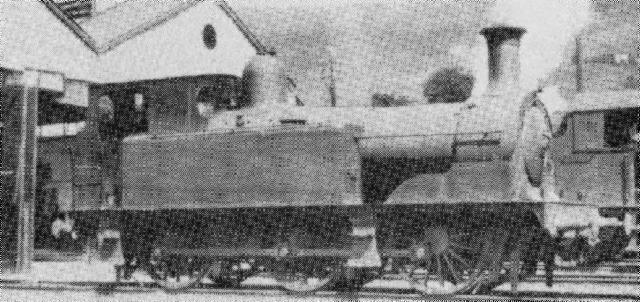 |
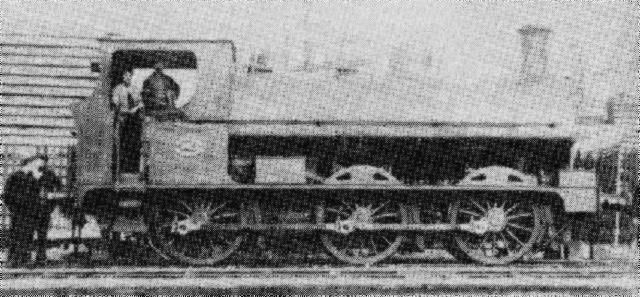 |
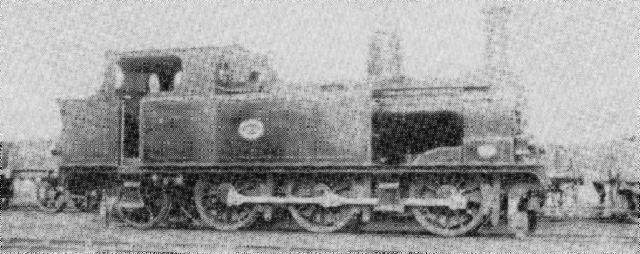 |
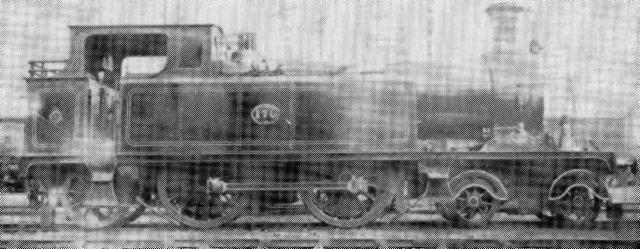 |
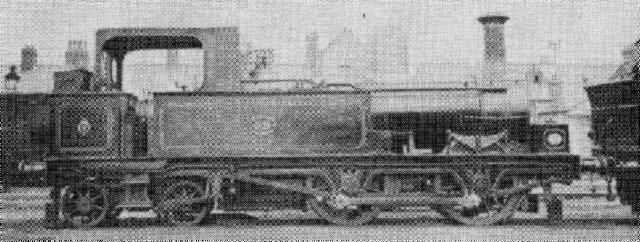 |
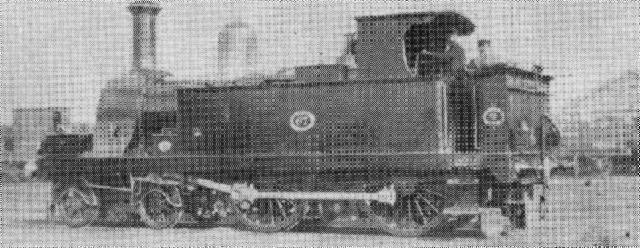 |
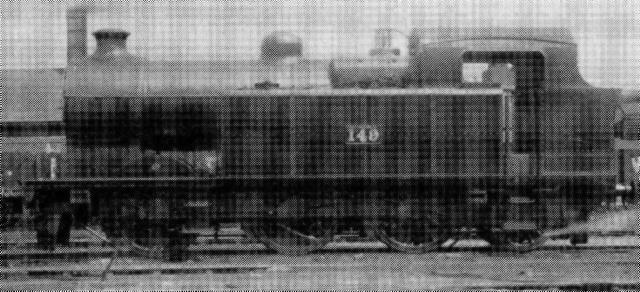 |
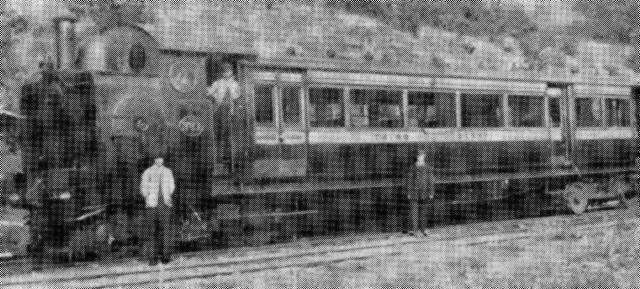 |
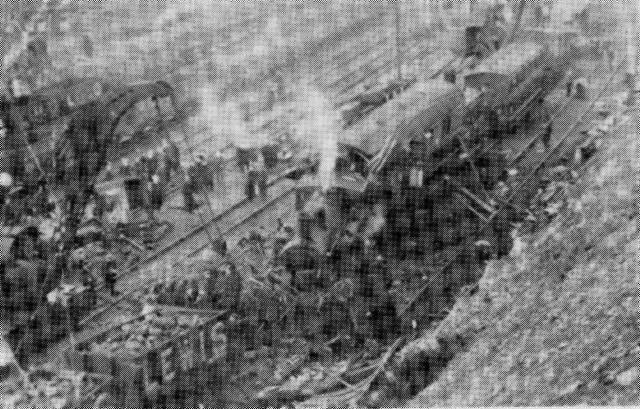 |
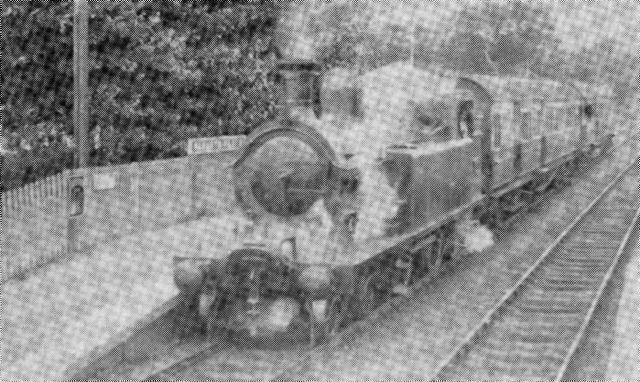 |
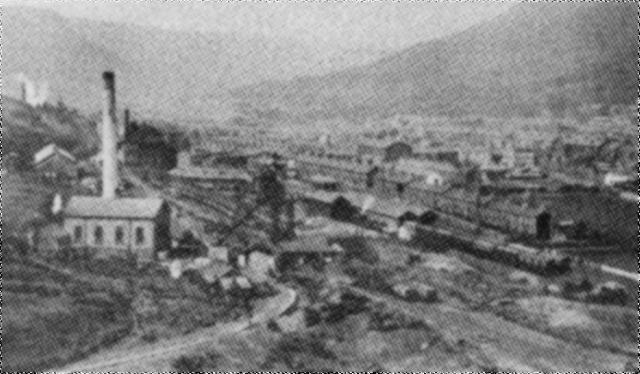 |
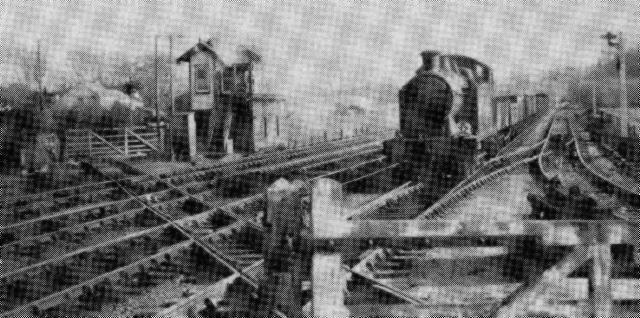 |
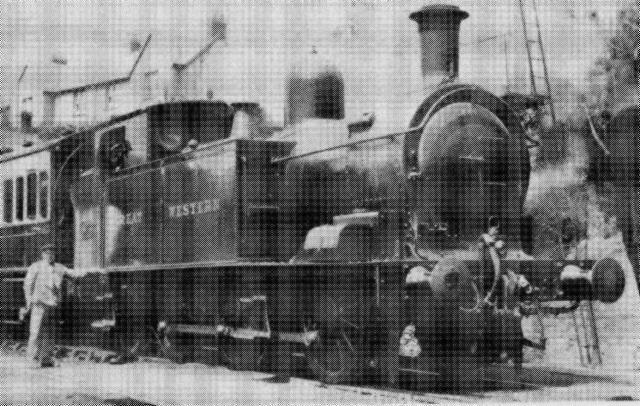 |
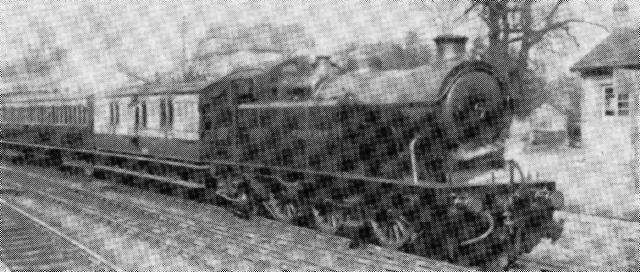 |
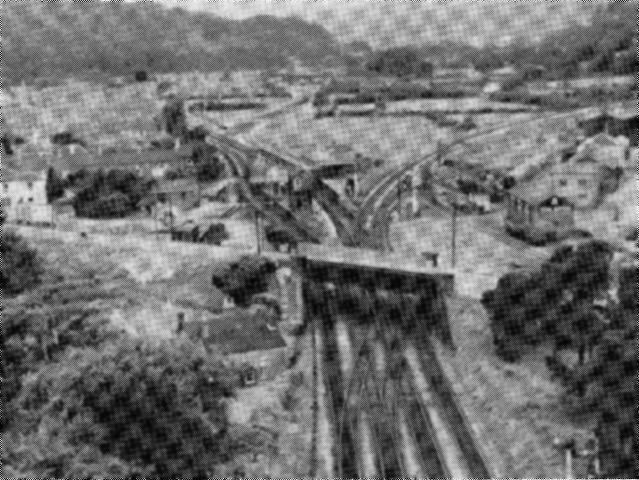 |
Congestion at Cardiff
Meanwhile,
a far more serious competitor was emerging from the great congestion which
prevailed on the T.V.R. and at the shipping ports, consequent upon the enormous
growth of the South Wales coal industry. Not withstanding the opening of Penarth
Dock in 1865, and partly as a result of failure to carry out certain
enlargements of the dock accommodation at Cardiff, the congestion at the latter
place became so acute that in January 1883 (when South Wales coal shipments had
risen to over 8,000,000 tons per annum) it was possible to walk right across the
Docks upon the decks of vessels moored side by side! Little more than half the
vessels presenting to load at Bute Docks could be accommodated on the day of
arrival; the congestion at Penarth Dock was relatively as bad, and the coal
owners and shippers were in open revolt against this state of affairs and
against increased shipping charges at the Cardiff Docks. Collieries were working
short time because they could not get a proper supply of wagons for outward
loading.
Some
alleviation was promised by proposals introduced into Parliament in 1883 by the
Bute Trustees for the provision of storage sidings on the Taff Vale Railway, the
engines of the dock authority to have running powers to bring traffic down from
these concentration points to the docks. Counsel for the Bill (which was
subsequently withdrawn upon the Taff Vale Company giving an undertaking to
provide increased accommodation on their own account) painted a grim picture of
the state of affairs on the Taff Vale main line:
‘It
is not an infrequent thing for a train of coal coming from Pontypridd down to
Cardiff, a distance of 12 or 13miles, to be 8 or 9 hours on the journey ...
simply from the congestion of traffic. It is no infrequent thing, I believe, for
enginemen to be 7 or 8 hours without moving a yard, waiting until the line can
be cleared.’
The Barry Challenge
The
rebellious coalowners and shippers were not to be placated with stopgap
measures, however. Led by David Davies of the Ocean Collieries, who since 1865
had been an important freighter on the T.V.R., and was one of its severest
critics, they had already promoted the Barry Dock & Railways Company for
establishing a great new shipping port on Barry Sound, to be connected by
37miles of railway with the Rhondda, Taff, Merthyr, and Aberdare valleys. The
bill naturally met with the bitter opposition of the Taff Vale Railway and the
Bute Trustees, and after passing the House of Commons Committee, it was thrown
out by the Lords Committee on 26 July 1883. Nothing daunted, the promoters
(after an offer to purchase Bute Docks, which was naturally rejected) brought
their bill before Parliament again in 1884, when, despite opposition as before,
it went through, receiving the Royal Assent on 14 August 1884. In its final form
the Act contained some small concessions to the T.V.R., including the stopping
short of the Barry's Rhondda line at the Hafod junction with the Taff Vale,
instead of running parallel with the latter right up to Cwmparc.
After
the passing of the Barry scheme, the Taff Vale quickly assumed the offensive by
supporting the ‘Cardiff, Penarth & Barry junction Railway‘ which was
to connect Penarth and Barry both by a direct inland line and by a loop round
the coast; the latter line would have intersected the site of an intended new
dock at Barry. In turn the Barry Company
promoted its own line from Barry to
Penarth Dock, the compromise outcome of these rival projects being that the Taff
Vale was authorised (C.P.&B.J. Act, 6 August 1885) to build only its
coastal route, extending westward from Penarth Town station to Biglis junction (Cadoxton)
with the Barry Railway, while the latter was granted powers (B.R. Act, 31 July
1885) to make a direct inland line from Cadoxton to a junction with the T.V. at
Cogan. The coastal line was opened from Penarth Town to the junction with the Barry
at Biglis (4miles 55chains) on 1 December 1887, but the connection at
the Biglis end was not made effective until 20 December 1888, when it was
brought into use simultaneously with that between the Barry
and the T.V.R. at
Cogan. Taff Vale passenger trains began to run through, to the Biglis junction
station of the Barry, 32 chains beyond the actual junction, in August 1889; this
station took its present name of Cadoxton on 1 June of the following year. The C.P. & B.J.
Company became vested in the Taff Vale under the Act of 26
August 1889.
Originally
the Barry Company's passenger trains terminated at Cogan, but in 1893 a
tripartite agreement was made giving the Barry
access over T.V. and G.W. metals
to Cardiff (Riverside and Clarence Road). Three years later a Barry threat to
build its own line from Cogan into Cardiff was bought off by the Taff Vale
agreeing to accept a smaller share of the gross receipts for its portion of
through journeys.
Barry
Docks were formally opened on 18 July 1889, and, by means of its connections
with the Taff Vale at Trehafod (Rhondda Valley) and Treforest, the Barry Company
was able to divert to its own port enormous quantities of coal which had
previously passed over T.V. metals to Cardiff or Penarth. How disastrous was the
outcome for the Taff Vale may be judged from the decline of its dividends, from
15% in 1888 to 9½% in 1889, 3% in 1890, and 21 percent
in 1891. It took the Taff Vale some years to recover from this great blow, but,
with the assistance of the still increasing coal trade, recover it did.
Pontypridd-Newport Link
Rivals in the Rhondda
Shipping
interests at Newport and Swansea had also long been casting envious eyes upon
the rich traffic of the Rhondda Valley, some of which it was hoped to attract to
those ports for shipment. Such proposals were also supported by the coalowners,
who were attracted by the possible benefits to themselves of inter-port
rivalries.
In
this respect, Newport was first in the field with the promotion of the
Pontypridd, Caerphilly & Newport Railway, constructed under Acts of 1878 and
1883 to afford an outlet for coal from the T.V. line for shipment at Newport.
This railway was opened in two sections, from a junction with the T.V. south of
Pontypridd station as far as Caerphilly in July 1884 and from Bassaleg to
Alexandra Docks, Newport, in April 1886. (Running powers over the Rhymney and
the Brecon & Merthyr Railways filled the intervening gap between Caerphilly
and Bassaleg.) The P.C. &N. Company was taken over in 1897 by the
Alexandra
(Newport & South Wales) Docks and Railway. That the Taff Vale did not regard
this line so much as a competitor, but rather as a source of income, is shown by
the fact that from the opening in 1884 until 1 May 1906 the Taff Vale provided
engine-power for the mineral and empty wagon trains over the P.C.&N.,
though not for the passenger traffic. Passenger service between Newport and
Pontypridd by this route, using the T.V.R. station at the latter place, was
begun on 28 December 1887, being worked at various times by the A.D.&R.
and the G.W.R.
The
Rhondda & Swansea Bay Railway had been incorporated on 10 August 1882 for
the purpose of connecting Swansea with the Rhondda Valley, but it was not until
2 July 1890 that the completion of the Rhondda Tunnel (1mile 1683yards) enabled
this objective to be attained by the running of trains to and from the Taff Vale
line over a junction near Treherbert.
By
1890, therefore, the rich territory of the T.V.R. was tapped on all sides by
other railways, and it was not long before a new menace became evident in the
shape of the ambitions possessed by the Bute Docks Company, in which the Bute
docks properties had been vested since 1 January 1887. Not content with
receiving from various railways large quantities of coal for shipment from its
docks at Cardiff, the latter had intentions of becoming a railway proper, and in
1897 it succeeded (after a bitter fight with opposing interests which naturally
included the T.V.R.) in securing powers to build several railways in the Cardiff
area, and became the Cardiff Railway Company. The proposed railways included one
from a junction with the Rhymney Railway at Heath to the existing dock railway
system at Roath, and a main line - from Heath to a junction with the Taff Vale
near Treforest. The latter line, 11miles in length, paralleled the T.V.R.
between Walnut Tree and Treforest; in 1911 it was completed up to the junction
with the T.V.R., but the latter company was successful, after much recrimination
and litigation, in preventing the junction from ever being brought into use for
regular traffic, and the Cardiff line languished as a local branch for many
years until its closure north of Coryton on 20 July 1931. Had the Cardiff
Railway ever been able to bring into use this alternative route, or to build
other lines which it unsuccessfully sought to make up the cast bank of the River
Taff to and beyond Pontypridd, it would have robbed the Taff Vale of much of its
haul of coal traffic.
Traffic Operation
Although
the headquarters of the Taff Vale Railway was at Cardiff, the Company used the
terms ‘Up‘ and ‘Down’ in their literal sense, the Up line being that
up into the valleys, and the Down line that down from the valleys towards the
cost. * In its earlier years the T.V.R. ran trains on the right-hand track
instead of the left-hand.
Coal Train Working
In
common with other South Wales railways, the Taff Vale was fortunate in that its
principal routes descended towards the sea and were thus in favour of the loaded
coal trains. Much of the coal traffic was of the ‘wait order’
classification, requiring to be held in private owners’ wagons against
shipment orders (this being a characteristic of the South Wales coal trade); to
accommodate such traffic, large groups of reception, exchange, or storage
sidings were provided at Treforest, Roath Branch junction, Crockherbtown, East
Branch (Cardiff), Canton, and Grangetown (Penarth Dock traffic), etc. There are
also extensive sidings at Penarth junction (Radyr), to which point Rhymney Railway
engines worked traffic originating on that system and destined for
shipment from Penarth; these trains used the Walnut Tree junction, originally
installed for the use of the Rhymney Railway in 1858.
Pontypridd
is the focal point for nearly all Taff Vale coal traffic destined for the
seaboard, and for returning empties; in prosperous times as many as 250 goods,
mineral, and empty wagon trains passed through Pontypridd every 24 hours; 20
different engine lamp head-codes were employed to distinguish the various routes
and classes of freight trains. For a distance of 12miles 11chains between
Cardiff East Branch junction and Pontypridd junction (which is just north of
that station, there being also a curve here to give direct running between the
Rhondda Valley and the Merthyr direction) the line is four-track with a
progressively intensifying line-occupation towards Pontypridd; at Llandaff Loop
junction there existed a somewhat awkward but necessary arrangement whereby the
mineral lines cut across the passenger lines on the level, being on their east
side from East Branch junction to Llandaff, and thereafter on the west side. In
order to give direct access at this point between the main line and the lower
end of Penarth junction Yard, Radyr, the Llandaff Loop Line (550 yards) was
opened in 1900.
For
many years the Taff Vale worked coal trains without rear brake-vans, a red lamp
being hung on the coupling hook of the last wagon. In 1907 the company engaged
successfully in a dispute with the Board of Trade, which tried to make
brake-vans compulsory (the railway trade unions also advocated them, somewhat
naturally); it was proved that no accident had occurred which might have been
prevented had a brake-van been attached, but the use of brake-vans later became
universal on all sections. The practice of propelling freight trains, with or
without brake-vans was extensively employed on the branch lines.
In
its early years the Taff Vale Railway was presumably too busy with its coal
trade to make much effort to stimulate passenger travel, as witness three
passenger trains a day on the main line as late as the sixties. From 1888 to
1898 the first Monday in each month was given over wholly to passenger traffic,
this being ‘Mabon’s Day’ when all collieries were closed and the miners
made holiday. Freight traffic was largely suspended and innumerable excursion
trains run, every available vehicle being pressed into service. The working
timetables showed all the Mabon’s Day passenger trains, identifying them with
the initials ‘M.D.’*
* ‘Mabon’: The Rt. Hon. Wm. Abraham, M.P. (1842-1922) was responsible for securing the monthly holiday, which also helped to restrict production.
Developing Passenger Traffic
With
the advent of Mr. Ammon Beasley as general manager in 1891, and with the
opening-up of the coastal area between Penarth and Barry as a residential
district, great efforts were made to stimulate the passenger traffic,
substantially increased train services being provided on all sections. In the
first decade of his management, while he was energetically engaged in restoring
Taff Vale fortunes after the ‘Barry Crisis,’ Mr. Beasley augmented the
passenger service by about 40%. From 1903 onwards the Taff Vale also
took a leading part in the development of steam railcars for branch line work,
and ‘platforms’ were established not only on the valley branches but also in
the Cardiff area. These railcars had both first and third class accommodation;
at one time 19 such units were in use, but, towards the end of the company’s
independent regime, the railcar engines being worn out, the units were mostly
replaced by short push-and-pull trains hauled by small tank engines adapted for
this purpose. The passenger portions of the units were removed and converted for
use as trailers.
Through
passenger trains ran between Cardiff and Merthyr, Treherbert, etc., and some of
the latter trains were extended over the R.&S.B. Railway to Swansea form of
working which survives to the present day. As a reciprocal arrangement, trains
of R.&S.B. stock worked through to Cardiff. While some of the suburban
trains between Penarth or Cadoxton and Cardiff ran through to Queen Street and
beyond (a new connection to enable them to pass above instead of across the G.W.
main line was installed from CardiffG.W. to East Branch junction in December
1896), others ran to the G.W. terminus at Clarence Road, near the docks, calling
also at Riverside Station-really an outlying part of Cardiff General Station,
and now incorporated therein.
Queen Street Station
From
1887, when it replaced the original and decidedly tumbledown station nearer the
docks (likened by E. L. Ahrons to ‘a moderately glorified fowl-house’),
Queen Street was the principal Taff Vale Station in Cardiff, being also the
location of the General Offices. Queen Street in Taff Vale days had three
platforms with an aggregate length of 1700ft., the total covered area being
4,400 sq. yards. On an average weekday the station dealt with some 16,000
passengers, there being about 200 arriving trains and a similar number of
departures. After the 1922 grouping the station was enlarged by the conversion
of the Down platform into an island, affording an additional through platform
line on the east side. In July 1928 a new connection was laid in at the north
end to enable the Rhymney trains to use Queen Street instead of the old R.R.
(Parade) station nearby.
Although
it did not book as many passengers, Pontypridd was an even busier station than
Cardiff so far as train operation was concerned, owing to the enormous mineral
traffic which passed through it. Until its reconstruction, which began in 1907,
the station comprised two through platforms and one. Up and one Down bay. As
rebuilt it consists of a long island platform with three bays for terminal
trains, the mineral lines passing clear of the station on its west side. The
total platform areas exceeded 8,200 sq. yards, and in 1920 the station dealt
with 10,000 passengers per day, this figure excluding a very large exchange
traffic between the various services.
In
addition to competing for the coastal traffic, the Barry Railway also challenged
the Taff Vale on a limited scale for the Cardiff-Pontypridd business, by means
of a service from Cardiff (Clarence Road) via St. Fagan’s and Tyn-y-caeau
junction. This service ran to the Barry station at Pontypridd (Graig), until 5
May 1930, when upon the closing of the Graig Station it was diverted to the ex-T.V.
station. Other services competitive with those of the Taff Vale included the
Rhymney Company’s Cardiff Merthyr trains via the Quakers’ Yard & Merthyr
joint Line, and a fairly short-lived Newport-Merthyr service operated from 12
March 1906 by G.W.R. rail-motors via the Sirhowy Valley line, Tredegar junction,
and the Q.Y.&M. joint.
Except
during the two World Wars, through services have for many years been worked
during the summer only between the Taff Vale line and Aberystwyth, the main
portion starting from Cardiff and being joined at Pontypridd by through coaches
from the Rhondda. Principally the route was via Merthyr (reverse), Tal-y-llyn,
and Moat Lane, the Cambrian and Brecon & Merthyr Railways sharing the
provision of motive power north of Merthyr. During the 1949 season, however, the
train (running on Saturdays only) has been routed via the Rhondda, the R.&S.B.
section, and Carmarthen.
By
its Act of 11 August 1903 (at the beginning of the railcar era, when passenger
traffic was developing fast), the T.V.R. obtained powers, which were not however
exercised, to adopt electric traction. The Act of Incorporation 77 years
previously had included provision for the line to be worked by ‘other moving
power’ apart from locomotives, but evidently this prescient clause was
considered inadequate!
Locomotives
The large and varied traffic of the Taff
Vale Railway required a stock of nearly 300 locomotives. The first engines for
working the traffic on the opening in 1840 were six-wheelers by Sharp Bros., who
supplied four engines in 1840-1841, and Hawthorn’s at least three (possibly
more) in the latter year. Messrs. G. and J. Rennie furnished the next engine in
1842, whilst the name Gloucester of no. 8 (Norris Engine Works, Philadelphia,
1842) suggests that it may have been one of the ‘Lickey Incline’ engines for
the Birmingham & Gloucester Railway. Further engines were supplied by
different manufacturers in the next few years, and some of them were of the
0-6-0 goods type; all the early T.V. locomotives carried names of local
association, and by 1852 there were twenty-six engines in service. The 2-4-0
type had now become standard for passenger duty, and the 0-6-0 for goods, many
of these early engines having double frames and other Kirtley characteristics.
In 1856, the company built an engine for the first time in its own works at
Cardiff; this was appropriately named Cardiff, being an 0-6-0 goods engine with
16inch by 24inch cylinders and coupled wheels 4 foot 8½inches.
The
practice of naming all Taff Vale engines, irrespective of their duties, was
abandoned with the construction at Cardiff in 1862-1863 of some double-framed
goods engines which were the last T.V. locomotives to have names. Practically
all the local place-names appropriate to the system, together with some which
were not, had been used up in the 23 years since the opening of the line, and
evidently the authorities decided to give it up as a bad job.
It
was not until 1865 that the tank type of locomotive, afterwards preponderant on
the T.V. and most other South Wales railways, was introduced with the purchase
from Messrs. Sharp, Stewart of four six-coupled saddle tanks having outside
frames, 16 inch by 24 inch cylinders, and 4 foot 2½ inch coupled wheels. Four
more of the same type were ordered in 1867, and later a number of old tender
engines were successfully rebuilt as tanks.
In
1868 the 0-6-0 side tank appeared for the first time on the T.V. with the
purchase of two powerful locomotives of this arrangement, which had been built
for the Metropolitan extension to St.John’s Wood; two more were bought in
1875.
Mr.
Tom Hurry Riches embarked upon his distinguished career as locomotive
superintendent of the Taff Vale in 1873, and while he carried on with the 0-6-0
type for freight traffic, he discontinued the passenger tender engines after
1878. His six-coupled goods engines were very successful and a large number of
them survived into the G.W.R.
regime; the last constructed under his supervision
came out in 1889, and altogether he built eighty-five of the type. The standard
cylinder dimensions were 17½inch by 26inch, the coupled wheels being 4foot
61inch; in later life most of these engines were rebuilt with larger boilers.
Improved Tank Engines
With
the improved design of tank locomotive now becoming available, it was evident
that this sort of engine was most suitable to the Taff Vale system, with its
short runs and quick turn-rounds, the tank engines being particularly economical
in passenger working. In 1884 Mr. Riches brought out some very smart 4-4-0 tanks
for branch line passenger working, having outside cylinders 16inch by 24inch,
5foot 3inch coupled wheels and 140lb. steam pressure; all three were reboilered
in 1914 and were later taken into G.W.R.
stock, though they did not then long
survive. For main line passenger work, there was introduced in 1888-1891 the C
class Of 4-4-2T (six engines) with inside cylinders, being the first of this
variety to appear on a British railway. They were very smart-looking engines and
good at their work, the cylinders being 17½inch by 26inch, coupled wheels 5foot
3inch and boiler pressure 160lb. All were later rebuilt and, like the 4-4-0
tanks, equipped for working auto-trains; the G.W.R.
scrapped them in 1925-1927.
It was one of these engines, 173, which was responsible for the serious accident
between Llantrisant and Treforest on 12 August 1893, when a hidden flaw caused
an engine-spring to come adrift and derail the train, with the loss of thirteen
lives.
Three 0-6-0 tank engines having several unusual features were built by Kitson’s in 1884 for working over the Pwllyrhebog branch, with its 1 in 13 cable-assisted incline. These were 141-143 of T.V. Class H, which became G.W.R. 792-794, and are still at work as B.R. 193-195. In order to prevent the firebox from becoming uncovered when on the incline, the boiler slopes towards the firebox, above which is placed the dome. The driving wheels are of as large a diameter as 5foot 3inch to ensure clearance of the cable-sheaves.
The
year 1885 saw the introduction of a type which rapidly became the most numerous
on the line, as well as individually the most popular type throughout the
railways of the South Wales coalfield-the 0-6-2 tank. This wheel arrangement had
originated in a ‘rebuild’ on the L.&Y. in 1879, and was first introduced
to South Wales in 1885 by the Taff Vale and the Rhondda & Swansea Bay
Railways, the latter being sufficiently proud of the innovation to include a
picture of the engine (a Kitson product) in its coat-of-arms. How popular the
0-6-2T became is shown by the fact that, of 767 South Wales engines taken over
by the G.W.R. at amalgamation, no fewer than 446 were of this arrangement.
The
type owes its success in South Wales to the fact that it enables a fairly
powerful engine, with adequate adhesion, coal and water space, to be
accommodated in relatively small dimensions, thus facilitating its use on
colliery branches and in traffic sidings; it can also be freely interchanged
between passenger and freight work. The first 0-6-2T on the Taff Vale were of
class M and had inside cylinders 17½inch by 26inch, coupled wheels 4foot 6inch,
boiler pressure 140lb., and weighed 491 tons in working order. Over 150 engines
of this wheel arrangement, but of progressively more powerful dimensions, were
constructed during Mr. Hurry Riches’ regime, the majority being rebuilt after
grouping with Swindon-type boilers and fittings.
Mr.
Hurry Riches died in 1911, and his successor, Mr.J.Cameron, brought out in 19I4
the largest and most powerful version of the Taff Vale 0-6-2T. This was the
handsome and efficient A class, which as originally built had cylinders 18½inch
by 26inch, coupled wheels 5foot 3inch, boiler pressure 175lb. and weighed in
working order just over 69 tons. Since amalgamation the 58 engines of this class
have all been rebuilt with G.W. boilers and superheaters.
At the end of 1921 the Taff Vale had a total stock of 275 engines, of which 60 were on the duplicate list. A quarter of a century later just over 100 ex-T.V. engines survived to be taken into the locomotive stock of British Railways, these survivors being confined almost exclusively to classes A, H, and 04, the last-named being a Hurry Riches 0-6-2T first introduced in 1907. The 408 passenger train vehicles included some admirable bogie stock, built at Cardiff Works, while there were 2,372 freight vehicles (nearly all coal class traffic was carried in private owners’ wagons), 368 service vehicles, and 4 steam railcars. The automatic vacuum brake was used. Liveries were black with red and yellow lining for locomotives, Berger’s brown lower panels and white upper panels for carriages; the white when varnished had a primrose effect, while between the carriage panels ran two thin lines-black against white and gold against brown. During the early years of Mr. Hurry Riches’ tenure a red-brown colour had been used for locomotives.
The
locomotive works and drawing offices were at West Yard, Cardiff Docks, and were
fully equipped to deal with all phases of locomotive and boiler construction.
The Taff Vale was the only one of the South Wales railways to build locomotives
in any numbers in its own shops, but towards the end of last century the Company
found it more convenient to rely upon outside manufacturers for new engines, and
thereafter the Works were used for about 6o heavy repairs or rebuilding and 60
light repairs annually. The last locomotive to be built at West Yard was the
power unit for No. 1 steam railcar, in 1903. West Yard shops were closed down
following the amalgamation, the Caerphilly Works of the former Rhymney Railway
becoming the main G.W.R. factory in South Wales. The Taff Vale Carriage &
Wagon Shops were at Cathays (Cardiff) and are still so used; Cathays was also
the principal locomotive running-shed on the system, between 80 and 90 engines
being stationed there. The subsidiary running-sheds were at Penarth Docks, Radyr,
Coke Ovens (near Pontypridd), Treherbert, Ferndale, Abercynon, Merthyr, and
Aberdare. Coke Ovens shed was closed and the engines transferred, mainly to
Abercynon shed, in 1933.
Rules and Regulations
The
Taff Vale Company did its best to cover every possible contingency by issuing no
fewer than 800 rules and regulations, including ‘Local Instructions.’ Some
of the rules (1856) for the staff are worth quotation:
12. -Every person is to come on duty
daily, clean in his person and clothes, shaved, and his shoes blacked.
26. -It is urgently requested every
person . . . on Sundays and Holy Days, when he is not required on duty, that he
will attend a place of worship; as it will- be the means of promotion when
vacancies occur.
40. -Not any instance of intoxication,
singing, whistling or levity, while on duty, will be overlooked....
94. -All the Servants of the Company,
are to place sand or gravel upon the rails, when they perceive, or hear that an
Engine is slipping.
241. -It is strictly forbidden that any
Officer or Servant shall at any time interfere in the least with matters of a
political nature.
277. -All persons, especially those in
uniform, are to keep their hair cut....
311. -Persons having passes are to ride
in the fourth wagon from the last in the train, and at all times in a sitting
position upon the bottom of the wagon.
428. -No person can become a Station
Master .... unless he is married.
The
rules and regulations also enjoined that all members of the staff must salute
the officers and directors, that any person presenting himself for his wages
before the proper time, or otherwise misbehaving himself at the pay-desk, would
have his money held back until next pay-day, and that no gang of men must
include two of the same surname (rather a difficult proposition in the land of
Jones!). The Rule Book concluded, somewhat optimistically, with a speed table
enabling the staff to calculate speeds up to 100 m.p.h.
Early
signalling was on the time-interval system, the first fixed signals being of the
disc-and-crossbar type. These gave three indications:
All Right, disc and crossbar edge-on by
day, white light by night;
Caution, disc turned to show its green
side to the approaching train by day, green light by night;
Danger, disc turned to show red side to
the approaching train by day, red light at night.
At junctions, triangular lights were used.
In
common with several neighbouring South Wales railways, the Taff Vale in more
modern times adopted the somersault type of signal, as used by the Great
Northern. The largest signal-boxes were those at Cardiff (62 levers) and
Pontypridd (230 levers).
Modern
permanent way consisted of bull-headed rail in 45foot lengths, weighing 95lb.
per yard on 55lb. chairs.
Apart
from the Llantrisant accident already mentioned, two serious collisions occurred
on the Taff Vale. At Pontypridd on 19 October 1878 thirteen were killed, and in
a rear-end smash on 2 3 January 1911 at Coke Ovens there were eleven
fatalities-.
A Famous Law Case
In
1900 the Taff Vale Railway figured in a legal action which, as ‘the Taff Vale
case,’ became a classic in railway and trade union law. For some years the
railway trade union movement had been steadily gathering strength, and the
Amalgamated Society of Railway Servants (later incorporated in the National
Union of Railwaymen) apparently selected the T.V. as the objective of a ‘test
case’ to compel the railway company to give official recognition to the
A.S.R.S. When such recognition was refused by the company, the society called a
strike, and this began on 20 August 1900. Energetic measures were taken by Mr.
Ammon Beasley, who brought in large numbers of ‘volunteers’ to work the
railway and at the same time secured an interim injunction against the A.S.R.S.,
leading to the collapse of the strike after about ten days. On 7 September the
Society successfully appealed against the injunction, but on 22 July of the
following year the House of Lords reversed this appeal, with the important
ruling that it was possible to sue a trade union for damages in a representative
action. The company therefore brought an action for damages arising out of the
strike, a fresh writ and injunction being granted against the society, its
officers and trustees, on 4 December 1900. The hearing of the action occupied
thirteen days before Mr. Justice Willis and a special jury; judgement was given
for the railway company and the damages agreed at £23,000. This test case was a
personal triumph for Mr. Ammon Beasley, but was particularly unhappy for a
concern which had always prided itself on its relations with employees, and
which since 1893 had provided free, non-contributory pensions for all servants
retiring after 25 years’ or more service.
A
natural sequel to the fierce railway competition which prevailed in South Wales
in the latter part of the nineteenth century and the early years of the
twentieth century was a tendency towards coalition, particularly of those
railways which conflicted territorially. The coalowners and shippers were
strongly opposed to amalgamation because they feared rates would be maintained
at a high level in consequence. They pointed out that the Taff Vale had for many
years refused to reduce its rates, until forced to do so by the opening of the Barry
Railway. Hence internal as well as external opposition led to the failure
in 1888 of a proposal to amalgamate the Bute Docks Company with the T.V.R.
Twenty years later, when the Cardiff Railway
(as successor to the Bute Docks
Company) was seeking to extend its system, the Taff Vale Company introduced
Parliamentary Bills to acquire the Cardiff
and
Rhymney
Companies. Although most
of the traders this time supported the proposals, the Alexandra and the
Barry
Companies fiercely opposed them; the Bills failed to pass the Commons in 1900
and, although re-submitted for the ensuing Session, were eventually withdrawn.
War and Coalition
Then
came the 1914-1918 War, which threw upon the Taff Vale (in common with the other
South Wales lines) a heavy burden of coal and other industrial traffic, and
which helped to create the conditions leading up to the Railways Act of 1921.
War conditions also brought once more into the limelight the closeness of
interest between the Taff Vale, Rhymney, and
Cardiff Railways, and a first step
toward unified working was made in 1917 when Mr. E.A. Prosser, general manager
of the Rhymney Railway, was appointed general manager for the
Cardiff Railway also. Later the same year Mr. Beasley retired and was appointed to a scat on the
board and the deputy chairmanship of the Taff Vale. This left the way clear for
Mr. Prosser to assume the general managership of the Taff Vale as well. The
other officers of the three companies were not affected, but unified management
assured that the three railways were conducted on ‘closer working’
principles until amalgamated (as ‘constituents,’ not ‘subsidiaries’)
with the Great Western Railway as from 1 January 1922 (in practice from 25 March
1922).
In
each of the last 4 years of its independent existence, the Taff Vale paid 4% on its ordinary stock. This was a modest figure by comparison with those of
the boom years (in 1882, before the Barry era, it was 17½% including
bonus), but nevertheless it was a sound dividend, the company maintaining its
good financial position to the end. Moreover, under the 1889 scheme for
rearrangement of capital, the company had given £250 of maximum 6% stock in exchange for £100 of ordinary stock, so that the 4%
of 1921
was really much better than it looked.
At
amalgamation, the company had issued £10,171,398 of capital, of which roughly
half was ordinary stock; capital expenditure amounted to £6,777,236. Gross
receipts were £2,391,383, and net revenue £454,653. Other final statistics may
be of interest (1921):
Mileage
Owned,
112miles 3 chains; share of joint, 19 chains; leased or worked, 12miles
20chains; total (first track), 124miles 42chains; (second track) 72miles
45chains; (third track) 34miles 31chains; (fourth track) 22miles 27chains Total
single track including sidings, 411miles 36chains.
Originating Traffic
Passengers
Seasons
1st Class
56,926
893
2nd Class
172,614
1,391
3rd Class
6,692,061
5,894
Workmen
1,099,802
----
8,021,403
Tons
Head of livestock
Merchandise
471,697
19,750
Coal, coke, etc.
7,798,860
Other minerals
190,364
8,460,921
(The
great preponderance of coal, coke and patent fuels is eloquent testimony to the
relative importance of coal traffic to the company.)
Trainmiles
Loaded
Shunting
Coaching
820,506
69,643
Goods
606,678
1,142,799
The
End of the Taff Vale
Amalgamation
with the Great Western in 1922 laid upon broader shoulders a problem which would
undoubtedly have proved a very critical one for the South Wales railways, had
they been still independent when the tide of trade depression swept over the
country nowhere more disastrously than in South Wales-following the initial
post-war boom. With all these local railways, coal was at once their strength
and their weakness, and without a completely united front it would have gone
hard with some of them during the lean years between the wars. Moreover,
passenger road competition, which was but a looming shadow in the early
twenties, would probably have affected their net revenue more seriously than it
did that of the Great Western. As it was, the administrative and technical
economics which followed naturally upon amalgamation took up much of the slack
of the depression, and enabled the passenger services of the T.V. section to be
kept going on a fairly full basis, except for the branch closures which have
already been noted in the course of this book. The Taff Vale section of the
G.W.R. played an intensely active and worthy part in the Second World War, and
on 1 January 1948 became part of the Western Region of British Railways.
Although
its lines now play an efficient part in the far wider network of British
Railways, the pioneer traditions of the Taff Vale deserve to be remembered. It
helped to raise the Welsh coal trade (which nevertheless often detested it) to
unequalled heights of prosperity; it paid good dividends over many years; giving
scant quarter and asking none, it engaged with unyielding spirit in long,
fierce, and relentless Parliamentary warfare and litigation that enlivened the
railway annals of its time. Traversing a region that is imperishably associated,
by virtue of the quixotic adventures of Trevithick’s Pen-y-darran engine, with
the birth of the railway steam locomotive, the Taff Vale was the first railway
of any size in the Principality of Wales, and it still retains traces of the
handiwork of Brunel. All these things assure it a secure place in the history of
railways.
ADDENDA
AND AMENDMENTS (1977)
Also
in the Cardiff district, Queen Street South-Bute Road was singled in June 1966;
Cogan Junction-Penarth Town singled in February 1967, followed by withdrawal of
the passenger service between Penarth and Cadoxton via the coast route on 6 May
1968. A short section of this branch remained open for freight at the Penarth
end until November 1969. A more important freight line closure was that of the
Roath Dock branch on 4 May 1968, most of its course now being absorbed by
highway development.
Formerly
important connections between the T.V.R. and its neighbours (e.g. with the Barry
Railway at Trehafod Junction, with the P.C.&N. at Pontypridd, and with the
R.&S.B. above Treherbert) have all been taken out with the closure of those
routes, an important exception being the junction with the former R.R. at
Taff’s Well, since most of the freight from the Rhymney Valley now uses this
route to Cardiff and beyond. In June 1952, however, a new link was made from the
T.V. line above Taffs Well to the Nantgarw Colliery and by-products plant over a
short piece of former Cardiff Railway trackbed. A little lower down below
Taff’s Well, the Pentyrch Crossing of the main line on the level by the
Melingriffith industrial railway ceased to be used in 1959 and was taken out in
1962.
In
the Rhondda Valleys, the Pwllyrhebog Branch and incline were closed 1 July 1951,
traffic being diverted via the ex-G.W.R. Penygraig Branch. The Porth-Maerdy
passenger service was withdrawn on 15 June 1964, and the branch singled at the
end of that year. The Treherbert line was singled above Cwmparc in November 1972
(the main line between Abercynon and Merthyr had been similarly treated in the
previous year, except for a passing loop at Black Lion). At the extreme North
and South ends of the Rhondda Fawr respectively, the Blaenrhondda Branch (rump
of the whilom R.V.&H.J.R. - see p. 16) to Fernhill Colliery was closed at
the end of 1966, and the North to West loop at Pontypridd, opened in 1872, was
closed on 5 August 1968.
In
the Aberdare (or Cynon) Valley, the T.V.R. Aberdare Branch was stated (p. 14) to
have been opened in April 1846, but later evidence indicates the ceremonial
opening was 5 August in that year, and on the following day for public traffic.
Passenger service was withdrawn between Abercynon and Aberdare 16 March 1964,
and the line was singled in November 1968, except for a passing loop at
Abercwmboi. The railway layout in this valley was the subject of an interesting
development scheme introduced on 10 August 1973, when the ex-T.V.R. line was
diverted by means of a spur 594 yards long from Cwmbach Junction, mainly on the
alignment of the T.V.R. Cwmbach Branch of 1846, to join the closed Vale of Neath
line and to follow the latter on to Aberdare. This project, including the use of
a bridge brought from the former Oxford Princes Riseborough branch, was paid for
by the local council, in order to enable the upper part of the Taff Vale’s
Aberdare line to be used for road development, including the closure of a
notorious level crossing in the town.
Among
other closures there should be mentioned the withdrawal of the
Pontypridd-Llantrisant passenger service (31 March 1952, freight November 1959);
the Cowbridge branch (passengers 26 November 1951, freight 1 November 1965,
although Llantrisant-Llanharry remained open for iron ore until 1975); and the
Ynysybwl Branch (closed for passengers 28 July 1952, freight November 1959). The
end of the Nelson Branch (p.18) occurred with closure between Pont Shon Norton
Junction and Albion Colliery in September 1970.
(Acknowledgements to B.R. Western Region for further information and to Mr. E.R. Mountford for valued help with the above addenda, etc).